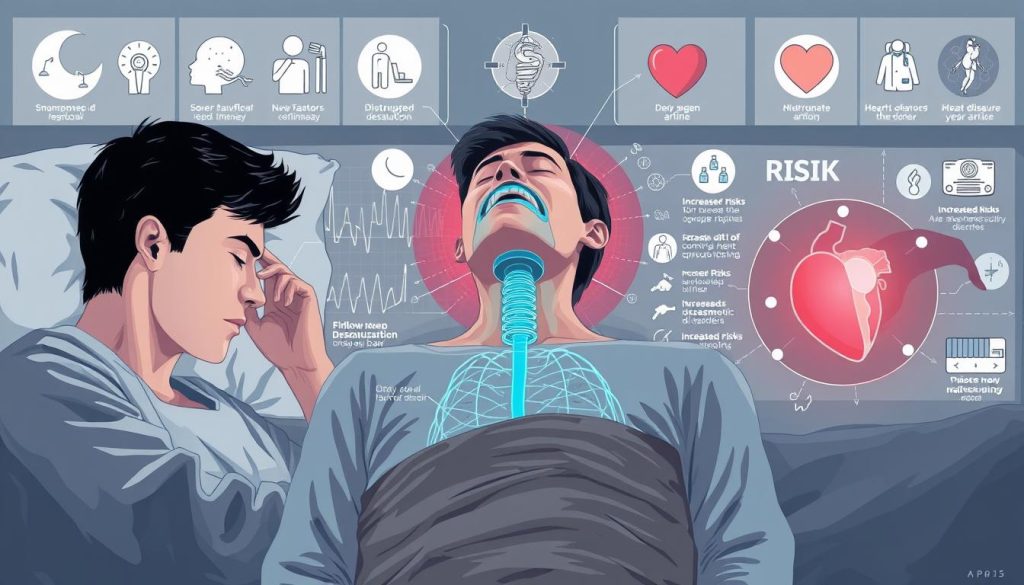Researchers at the University of California San Diego School of Medicine, along with international collaborators, have made a groundbreaking discovery in the field of sleep apnea. Their study highlights the potential of tirzepatide as the first effective drug therapy for this condition, offering a new approach to treatment.
Tirzepatide has shown promising results in reducing breathing interruptions during sleep, addressing both respiratory and metabolic complications. This marks a significant shift from traditional device-dependent therapies, such as positive airway pressure, to more accessible and effective treatment options.
The study, conducted over 52 weeks, involved participants from multiple countries, ensuring a diverse and comprehensive analysis. The findings not only improve sleep quality but also reduce metabolic risks, offering dual benefits to patients.
This research represents a turning point in the treatment of sleep apnea, paving the way for innovative therapies that enhance quality of life. Stay tuned as we delve deeper into the details of this groundbreaking study in the following sections.
Emerging Drug Therapies and Novel Treatments
A new era in treating breathing disorders has emerged with the introduction of tirzepatide. This groundbreaking drug has shown remarkable results in reducing symptoms associated with airway-related conditions, offering hope for millions worldwide.

Global Study Insights and Tirzepatide Breakthrough
International Phase III trials have provided robust evidence of tirzepatide’s effectiveness. Conducted across multiple countries, these studies involved diverse participants, ensuring comprehensive results. The findings, published in the New England Journal of Medicine, highlight significant improvements in respiratory function and overall health.
Key insights from the study include:
- Reduction in breathing interruptions during rest.
- Improved adherence compared to traditional treatments.
- Dual benefits addressing both respiratory and metabolic challenges.
CPAP Alternatives and Combination Approaches
Traditional CPAP therapy, which uses continuous positive airway pressure, has long been the standard treatment. While effective, it often faces challenges like patient discomfort and low adherence rates. Tirzepatide offers a promising alternative, reducing reliance on pressure-related devices.
Combination approaches are also gaining traction. Integrating weight loss strategies with CPAP therapy can address both respiratory and metabolic aspects, providing a holistic solution. For example, patients using CPAP alongside tirzepatide have reported better outcomes and improved quality of life.
However, it’s important to note the limitations of pressure-based devices. While they effectively manage airway pressure, they may not address underlying metabolic issues. This is where tirzepatide and similar therapies shine, offering a more comprehensive approach.
Sleep apnea research: Innovative Treatment Options
Innovative approaches are transforming how we address airway-related conditions. Drug therapies, like tirzepatide, are emerging as a first-line intervention, offering hope for those struggling with breathing disorders. These advancements reduce reliance on mechanical devices and pave the way for more personalized care.

Drug Therapy as a First-Line Intervention
Data from the University of California San Diego highlights the potential of drug therapies to become the frontline treatment for obstructive sleep apnea. Tirzepatide, for example, has shown significant promise in reducing apnea episodes and improving overall health. This shift from device-based care to therapeutic strategies directly targets the underlying pathophysiology of the disorder.
Key benefits of drug therapy include:
- Improved adherence compared to traditional treatments.
- Dual benefits addressing both respiratory and metabolic challenges.
- Reduced long-term health risks for patients.
Personalized Strategies for Combating OSA
Personalized treatment plans are being developed to address individual differences in how obstructive sleep apnea manifests. A patient-centered approach considers both the respiratory and metabolic aspects of the condition, ensuring comprehensive care. These strategies not only manage symptoms but also enhance quality of life for persons affected by the disorder.
For example, combining weight loss strategies with drug therapy can lead to better outcomes. This holistic approach addresses the root causes of the condition, offering a more sustainable solution.
| Treatment Type | Benefits | Limitations |
|---|---|---|
| Traditional CPAP | Effective in managing airway pressure | Patient discomfort, low adherence |
| Drug Therapy (e.g., Tirzepatide) | Reduces apnea episodes, improves metabolic health | Requires ongoing medical supervision |
| Personalized Care Plans | Tailored to individual needs, holistic approach | May require more time and resources |
These innovations mark a significant step forward in managing obstructive sleep apnea. By focusing on patient needs and leveraging cutting-edge therapies, we can improve health outcomes and quality of life for millions.
Understanding the Health Impact of Sleep Apnea
Recent studies highlight the far-reaching health consequences of untreated airway-related conditions. These issues go beyond nighttime disruptions, affecting overall well-being and increasing the risk of serious health problems.

Effects on Cardiovascular Health and Metabolic Risks
Untreated airway obstructions can lead to cardiovascular disease and high blood pressure. When breathing is disrupted, oxygen levels drop, putting extra strain on the heart. Over time, this can result in long-term damage to the cardiovascular system.
Metabolic risks are also a concern. Conditions like diabetes and metabolic syndrome are more common in individuals with untreated airway-related issues. These conditions are linked to insulin resistance and weight gain, creating a cycle that worsens overall health.
Linking Sleep Apnea to Broader Systemic Conditions
Airway-related conditions are now recognized as systemic diseases. They don’t just affect breathing but also impact other body systems. For example, low oxygen levels during rest can lead to inflammation, which contributes to a range of health problems.
Treatment options are evolving to address these systemic issues. Drug therapies, like tirzepatide, are showing promise in reducing both respiratory and metabolic risks. Device-based treatments, such as CPAP, remain effective but are now being combined with other therapies for better results.
| Health Impact | Treatment Options | Benefits |
|---|---|---|
| Cardiovascular disease | Drug therapy (e.g., tirzepatide) | Reduces heart strain, improves oxygen levels |
| Metabolic syndrome | Combination therapy (CPAP + weight loss) | Addresses both respiratory and metabolic issues |
| High blood pressure | Device-based treatments (e.g., CPAP) | Manages airway pressure effectively |
By addressing the root causes of airway-related conditions, these therapies can significantly improve quality of life. Early intervention and personalized treatment plans are key to reducing long-term health risks.
Technological Advances in Diagnosis and Therapy
Modern technology is reshaping how we diagnose and treat breathing disorders, offering new hope for patients. Portable monitoring tools are now making it easier to conduct accurate studies from the comfort of home. These innovations are transforming care, making it more accessible and less intimidating.
Home Sleep Study Innovations and Portable Monitoring
Gone are the days when patients had to spend nights in a lab for sleep studies. Portable devices now allow for monitoring oxygen levels and other key metrics at home. This approach not only improves comfort but also ensures more accurate results, as patients are in their natural environment.
These tools are particularly beneficial for individuals with diabetes or other metabolic conditions. By tracking oxygen levels and symptoms, healthcare providers can tailor care plans more effectively. This personalized approach enhances both diagnosis and treatment outcomes.
Evolving Surgical and Device-Based Treatment Options
For those who struggle with traditional therapies, newer surgical options are emerging. Multilevel surgeries are less invasive and target specific areas to reduce symptoms. These procedures are designed to improve airflow and enhance overall quality of life.
Device-based treatments are also evolving. While CPAP remains a standard, newer devices focus on improving patient comfort and adherence. Continuous research is refining these technologies, ensuring they meet the needs of diverse patient populations.
By combining innovative diagnostics with advanced therapies, we’re paving the way for better care. These advancements not only address immediate symptoms but also reduce long-term health risks, offering a brighter future for patients.
Insights from Obesity-Linked Breathing Research
Recent findings from Johns Hopkins Medicine shed light on the connection between obesity and breathing disorders. Obesity significantly complicates conditions like OSA, making treatment more challenging. Understanding this link is crucial for developing effective therapies.
Role of TRPM7 in Sleep-Disordered Breathing
Researchers have identified the TRPM7 channel protein as a key player in regulating breathing during rest. In obese individuals, this protein may suppress ventilation, leading to night-time breathing issues. A study on obese mice demonstrated how TRPM7 affects minute ventilation, offering new insights into OSA.
Using genetic knockdown techniques, researchers measured changes in breathing rates. They found that reducing TRPM7 activity improved ventilation but did not significantly increase blood oxygen levels. This highlights both the potential and limitations of targeting TRPM7 for therapy.
Evaluating Therapeutic Potential and Limitations
While targeting TRPM7 shows promise, it’s not a complete solution. Improved ventilation rates were observed, but oxygen levels remained unchanged. This suggests that additional factors may be at play in obesity-linked breathing disorders.
Key findings from the study include:
- A 15% improvement in minute ventilation after TRPM7 reduction.
- No significant change in blood oxygen levels despite increased ventilation.
- Potential for TRPM7-targeted therapies to complement existing treatments.
These results emphasize the need for further research. Understanding the complexities of obesity’s impact on breathing is essential for developing comprehensive treatment strategies.
| Key Metric | Findings |
|---|---|
| Minute Ventilation Improvement | 15% increase |
| Blood Oxygen Levels | No significant change |
| Therapeutic Potential | Complementary to existing treatments |
By continuing to explore these avenues, researchers aim to improve quality of life for individuals with obesity-linked breathing disorders. This work marks an important step toward more effective and personalized care.
Advancing the Future of Sleep Apnea Management
The future of managing airway-related conditions is being reshaped by innovative treatments and personalized care strategies. Combining advanced medicine with weight management and modern technology is paving the way for more effective solutions. These approaches aim to improve overall quality of life while reducing increased risk factors like heart disease.
Personalized medicine is at the forefront, tailoring treatments to individual body profiles and health needs. This ensures that each patient receives the most effective care. Integrating weight management into clinical practice further enhances outcomes, addressing both respiratory and metabolic issues.
Interdisciplinary approaches are merging care, technology, and lifestyle modifications. This holistic strategy not only manages symptoms but also improves long-term health. Emerging data suggests that these advancements will lead to better clinical outcomes and a higher quality of life for those affected.

